Using Games as Interactive Marketing Campaigns: An Overview
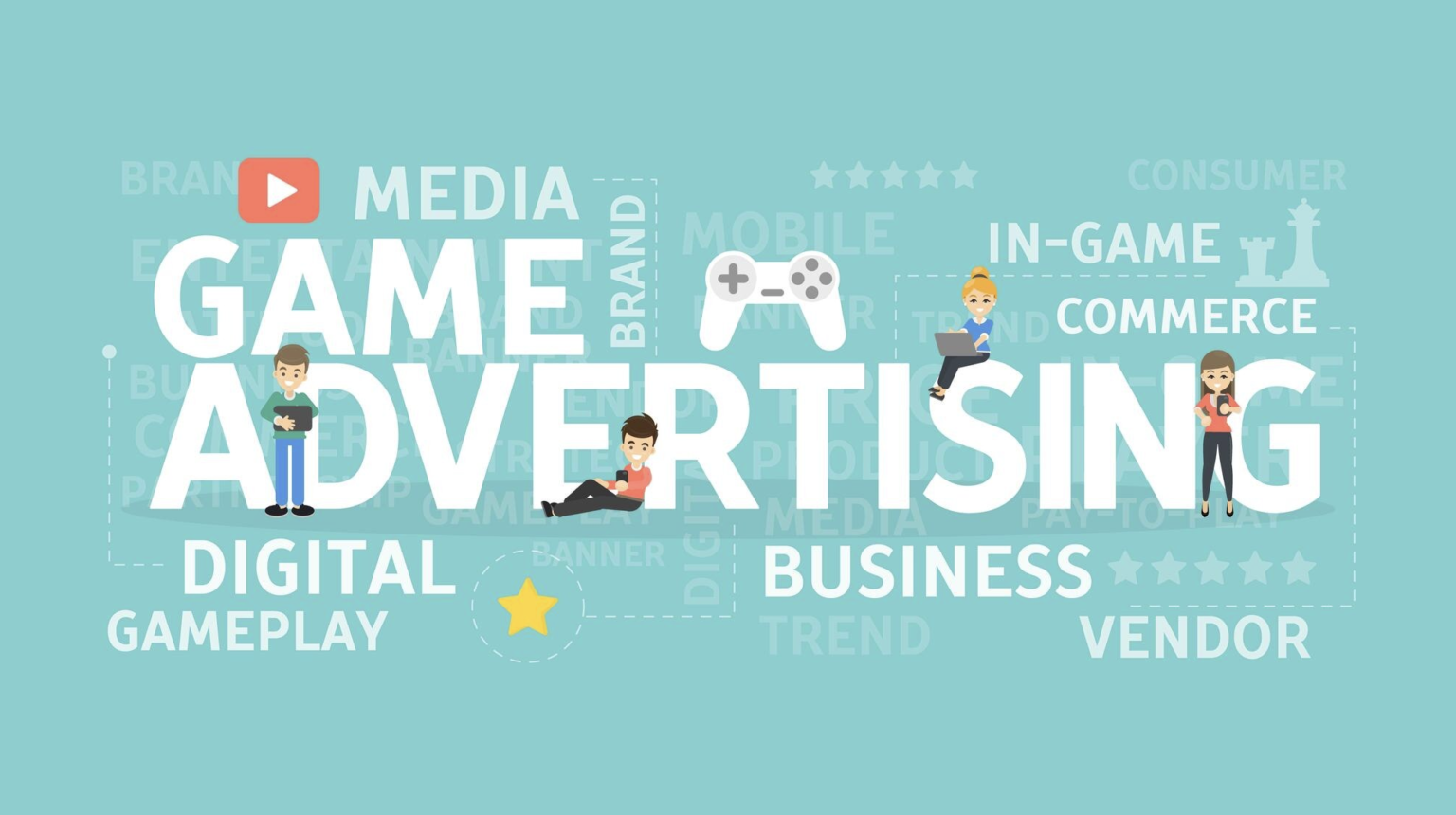
In today’s digital age, traditional marketing techniques are no longer enough to captivate and engage audiences. Brands are turning to interactive marketing campaigns that offer personalized experiences to connect with customers and build brand loyalty. One increasingly popular strategy is to use games as interactive marketing campaigns.
Games are a fun and engaging way to interact with customers and can offer a unique experience that sets brands apart from their competitors. Whether it’s an online game, an app, or an in-store experience, games can help brands create memorable experiences that customers will remember long after the game is over.
In this article, we will provide an overview of using games as interactive marketing campaigns. We will explore the benefits of using games in marketing, the types of games that work best, and how to create a successful game-based marketing campaign.
By the end of this article, you will have a better understanding of how to use games to create interactive marketing campaigns that engage your audience, increase brand awareness, and drive sales. So, let’s dive in and explore the world of game-based marketing.
What is gamification marketing?
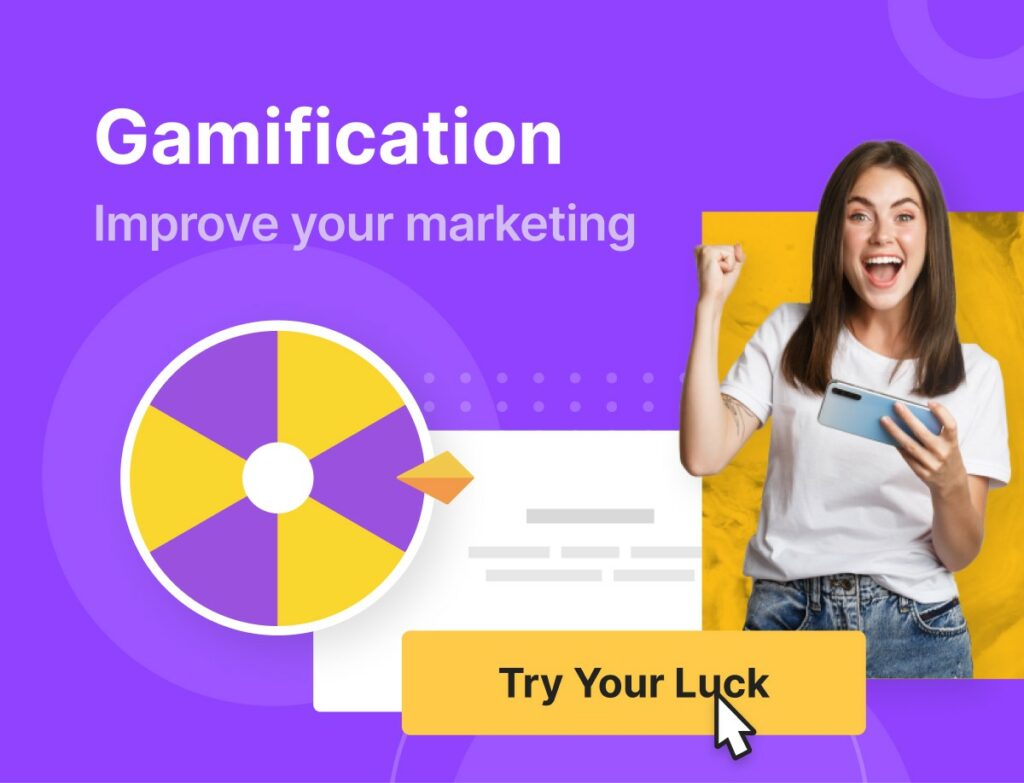
Gamification marketing is a marketing strategy that involves the use of game mechanics, design, and psychology in non-game contexts to engage customers and drive desired behaviors. In other words, gamification marketing applies elements of game-playing, such as points, badges, levels, and competition, to non-game activities such as marketing campaigns, loyalty programs, and customer engagement initiatives.
The goal of gamification marketing is to motivate and engage customers by making activities more enjoyable and rewarding. It can be used in a variety of ways, such as increasing brand loyalty, encouraging customer feedback, promoting new products, and improving customer engagement.
One of the key benefits of gamification marketing is that it can create a sense of fun and excitement around activities that might otherwise be mundane or uninteresting. It can also create a sense of community and competition among customers, which can further enhance engagement and loyalty.
Overall, gamification marketing is an effective way for brands to create engaging and memorable experiences that drive desired behaviors and ultimately, increase revenue. By incorporating game elements into their marketing campaigns, brands can create a unique and enjoyable experience that sets them apart from their competitors.
What are the benefits of gamification marketing?
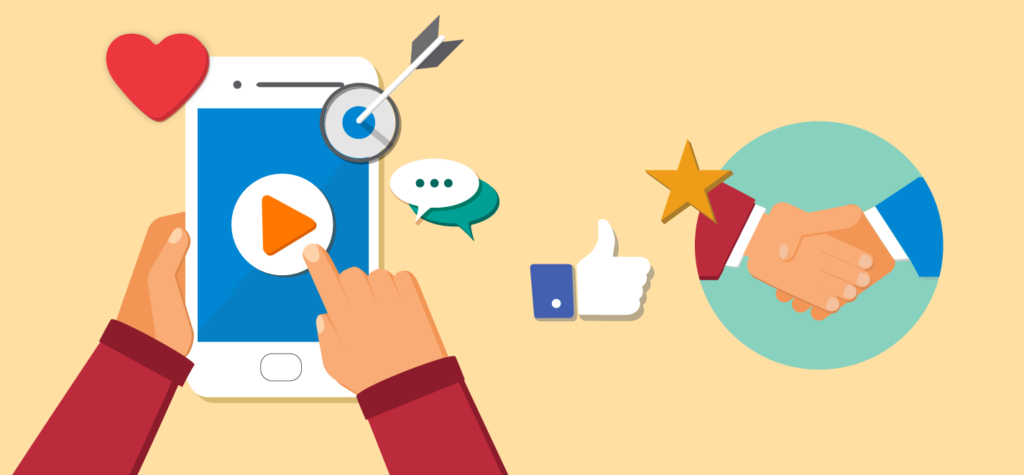
There are several benefits of gamification marketing, which is a marketing strategy that uses game mechanics, design, and psychology in non-game contexts to engage customers and drive desired behaviors.
Here are some of the key benefits:
1. Increased engagement: Gamification marketing can increase customer engagement by making activities more enjoyable and rewarding. By incorporating game elements, such as points, badges, and leaderboards, customers are more likely to stay engaged with the brand and its products or services.
2. Improved customer loyalty: Gamification marketing can create a sense of fun and excitement around a brand, which can lead to increased loyalty among customers. When customers have a positive emotional connection with a brand, they are more likely to remain loyal and continue to do business with the brand.
3. Better customer feedback: Gamification marketing can encourage customers to provide feedback on products or services. By providing incentives, such as rewards or recognition, for providing feedback, customers are more likely to share their opinions and insights with the brand.
4. Increased brand awareness: Gamification marketing can create buzz and generate interest around a brand. When customers enjoy a game or activity, they are more likely to share it with their friends and social networks, which can lead to increased brand awareness and exposure.
5. Improved data collection: Gamification marketing can provide valuable data on customer behavior and preferences. By tracking game data, brands can gain insights into how customers engage with the brand and its products or services, which can inform future marketing strategies.
Overall, gamification marketing is an effective way for brands to create engaging and memorable experiences that drive desired behaviors and ultimately, increase revenue. By incorporating game elements into their marketing campaigns, brands can create a unique and enjoyable experience that sets them apart from their competitors.
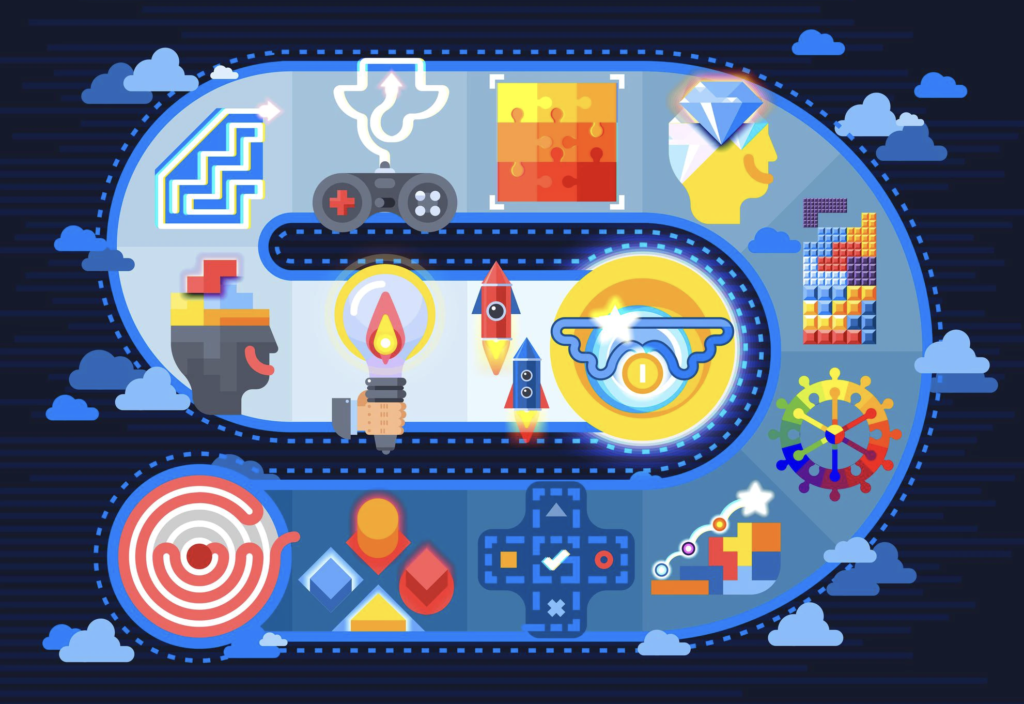
Examples of gamification marketing campaigns
Following are some successful marketing campaigns that will help you get started with gamification marketing:
Ally Racer Game
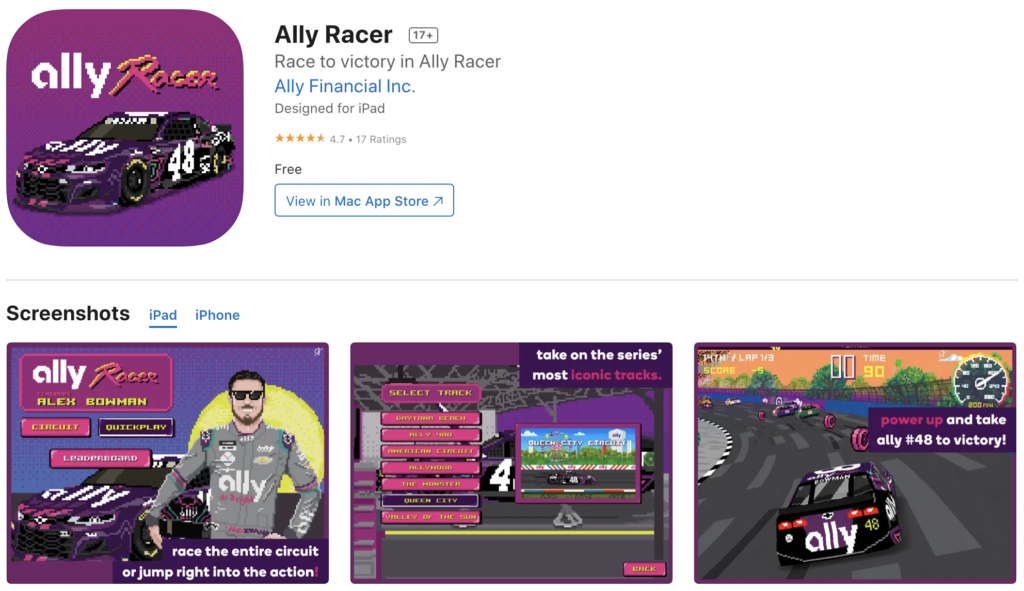
Ally Financial, a bank holding company, created a NASCAR video game for its web and iOS users. The game has a nostalgic look, perfectly allies with the brand and adds to the popularity of their sponsored NASCAR racer Alex Bowman.
Race to victory in the all-new Ally Racer 8-bit video game featuring driver Alex Bowman and the Ally 48
Back and better than ever, Ally Racer is the hottest racing game of the summer. Drive as Alex Bowman and race to victory in the Ally 48 across 7 racetracks. Select single race mode or compete across the entire 7-track circuit to rise up the ranks and land on the leaderboards. Select your difficulty level to hone your skills and work to collect as many rewards as possible while watching the clock to get your best time. As a nostalgic 8-bit game, Ally Racer blends the old with the new and is set to become your newest game obsession.HelloFresh Reveal Box Game
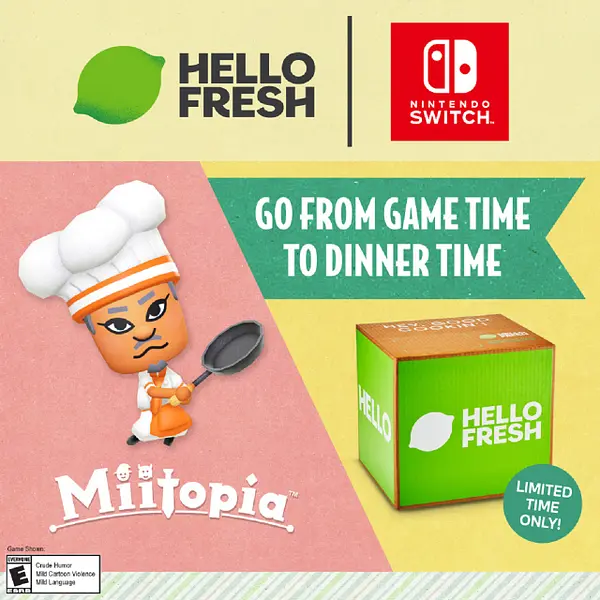
A game doesn’t always need to include complex graphics. HelloFresh uses simple stimulation to engage its users. Users must click on one of the three boxes to find their reward. This technique has been successful in boosting engagement rates and increasing conversions.
Win Back Game Nights with HelloFresh and Nintendo Switch™
HelloFresh is featuring four meals in celebration of Mario Day. These tasty dinners include tips for your junior chefs to lend a helping hand in the kitchen. If you select any of those four meals during this period, you will receive Mario themed crafting activities in your HelloFresh box such as place cards and cup wrappers to put the final touches on your great family dinner.
DSW VIP Club

DSW, a designer shoe company, allows its VIP users to collect rewards points and uses display bars to show their progress. Moreover, users can click on their dashboards to check for additional offers and rewards.
DSW designed key program elements around customer feedback, including the ability to earn points by donating shoes, and a simplified points system with faster rewards. The new program now includes three tiers: VIP Club, VIP Gold, and VIP Elite.
The 'Starbucks for Life' Game
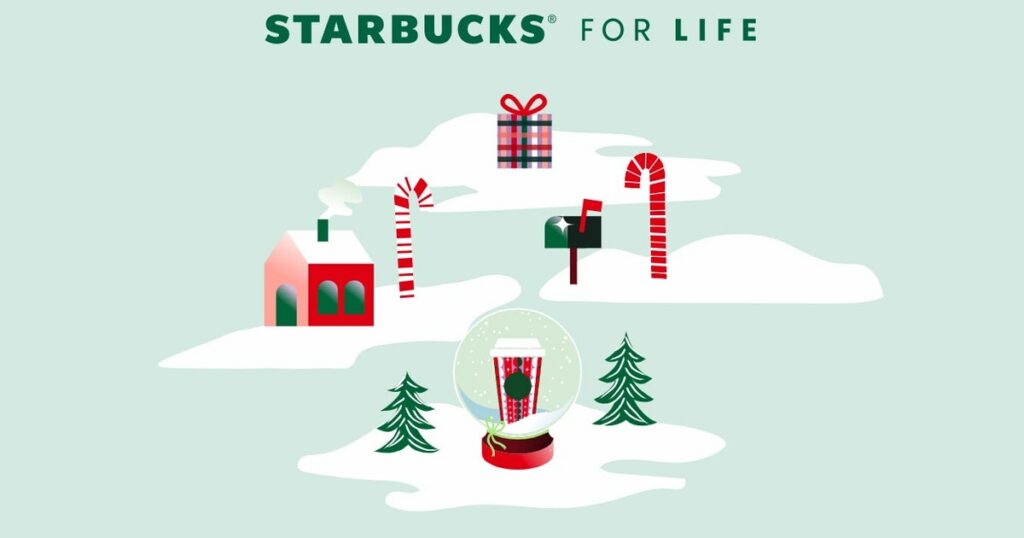
Starbucks offers a game to its rewards members, ‘Starbucks for Life.’ As the players move forward in the game, they get exciting rewards such as free merch, discount coupons and free drinks.
You’ll start each play by shaking the snow globe. From there, you’ll win a game piece or an Instant Win prize. To win a Collect and Win prize, you need to collect the three unique game pieces associated with that level. At stake is Starbucks For Life, Starbucks for a year, six months, three months, or one month, 15,000 Bonus Stars added to your Starbucks Rewards account, a $100 Starbucks gift card, and more.
Feast of Legends by Wendy's
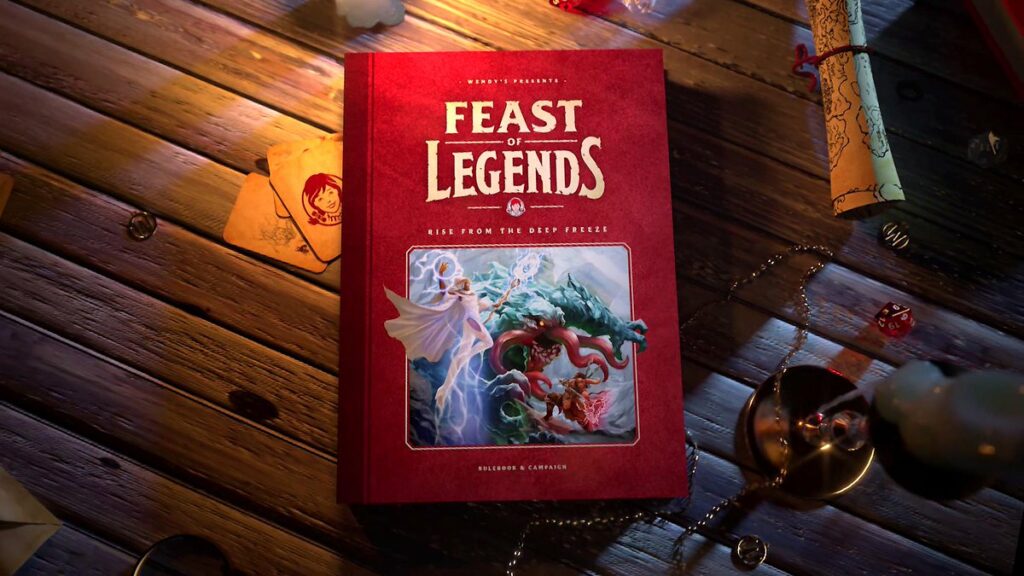
Wendy’s Feast of legends game gives a feel like Dungeons and Dragons and uses Wendy’s menu for in-game nomenclature. The game was positively received by people and enhanced brand engagement to a whole new level.
Wendy’s just dropped their first Tabletop Game, Feast of Legends. Now people are gathering to defeat the dark art of frozen beef. Because that’s what heroes do.
Conclusion
Initially, digital media related to gaming was thought of as a temporary fad that only catered to a niche that was susceptible to fade over the years. However, today it has millions of dedicated players contributing to the millions earned each passing day. It has become the most profitable form of media worldwide.
Gaming is not just a lucrative and profitable industry. Now, it has also become a viable marketing tool for several sectors. Over the years, organisations have been trying to use interactive marketing campaigns as a part of their digital marketing strategies. Also, with some of the most ambitious marketing campaigns designed to promote equally ambitious video games, even digital marketing has effectively promoted gaming. Gamification has become a viable element of various digital marketing strategies, with this success on both ends of the spectrum. It provides an extra degree of interactivity that we could not achieve earlier.
During the early days of traditional marketing, consumers’ interaction with a marketing campaign was only limited to physical interactions at live events. At that time, audience interaction and participation were few and far between. While television commercials still contributed to the marketing boom during the past few years, there was little audience interaction.
The more common way brands use gamification is through gaming apps committed to selling the product. These apps not only enhance interactivity and endorse products but also help generate more audience interest. Through gamification, the audience now can impact marketing strategies through participation. Sometimes, the game becomes so famous that it stands on its own, which helps promote it to an even wider audience.
Everyone loves games. Using the right gamification strategy for your marketing initiatives will help you boost user engagement and achieve high-end results. Look at the above ideas and devise the perfect gaming strategy for your marketing campaign.
